|
HOME: www.hiltonpond.org |
|||
THIS WEEK at HILTON POND Subscribe for free to our award-winning nature newsletter (Back to Preceding Week; on to Next Week) |
All text, maps, charts & photos © Hilton Pond Center NEOTROPICAL HUMMINGBIRDS 2013; PROLOGUE This year for the first time, Operation RubyThroat: The Hummingbird Project recruited TWO groups of volunteers for what has become an annual foray to study Ruby-throated Hummingbirds at Crooked Tree village in Belize. The first team arriving 27 February 2013 included birders, former teachers, and other adults from the U.S. and Switzerland, while the other--due to arrive 11 days later--was our second consecutive undergrad student group from Keystone College in La Plume, Pennsylvania (see next week's photo essay). To meet up with the initial Belize team for 2013, the Omega Group (team leader Bill Hilton Jr. and colleague Ernesto Carman Jr.) departed by air on 24 February from Managua--where they had just completed the first-ever Operation RubyThroat expedition to Nicaragua (see last week's photo essay)--on a flight to Belize City. They were met at the airport by old friend Leonard Gillett, head nature guide and driver for Bird's Eye View Lodge at Crooked Tree, where our teams have stayed on every Belize expedition since 2010. After handshakes and hugs and luggage loading, Leonard headed the van northwest toward Crooked Tree--accessible by a bumpy 3.5-mile-long causeway that crosses a large lagoon laden with wading birds.
All text, maps, charts & photos © Hilton Pond Center As we left the causeway and entered Crooked Tree Village, we drove past one of our primary mist netting locations in Belize--a nicely wooded lot across a dirt road from the hurricane shelter erected by the government. We should say FORMERLY wooded lot, however; the Omega Group was distressed to see this property--the "Hurricane Woodlot"--had been clear-cut and bulldozed a few weeks previously (above) and that we had lost yet another Operation RubyThroat study site in the Neotropics! (Followers of our previous expeditions may remember our main hummingbird banding locale in Guanacaste Province, Costa Rica--a 500-acre Aloe Vera plantation--had been plowed under in 2011 and converted to grazeland AND that this year at our Guanacaste back-up site the workers began removing nectar-laden, hummingbird-attracting aloe flowers in an effort to increase harvestable juice yield.) Needless to say, the Omega Group was NOT pleased with this discovery at Crooked Tree, so after checking in at the lodge and dining on delicious Creole cooking for supper we laid plans to explore the island on the morrow for alternate study sites. All text, maps, charts & photos © Hilton Pond Center
All text, maps, charts & photos © Hilton Pond Center 25-26 February 2013 The folks at Bird's Eye View Lodge (above) are the friendliest, most accommodating folks we could hope to work with. The rooms are spacious and comfortable (with walk-in hot showers and air conditioning!), the food is incredible (especially the fresh Tilapia fish caught daily just outside the front door), and the view of the freshwater lagoon and its tens of thousands of wading birds and other fauna is breathtaking. We also appreciate the hard-working kitchen staff for getting up an hour earlier than usual, enabling our well-fed group to get into the field as soon as possible each morning. We're ever grateful to lodge owners Denver & Norma Gillett for their hospitality, not the least of which is the loan of a 15-passenger van we use for scouting and daily transport of our citizen scientists during daily field work. Such support of our research is important and on-going.
All text, maps, charts & photos © Hilton Pond Center On 25-26 February the Omega Group took advantage of van access by exploring Crooked Tree for new hummingbird study sites--especially since our primary banding site had been defoliated. Our groups go to Belize in late February and early March because that's when the area's Cashew trees (above) are in full bloom. Cashews--native to northern Brazil and originally planted in rich, well-drained sandy soil around Crooked Tree at least 150 years ago--have flowers with sufficient nectar to get the attention of Ruby-throated Hummingbirds.
All text, maps, charts & photos © Hilton Pond Center Belize lies on the eastern edge of the Yucatan Peninsula (see map above), possibly the next-to-last stop for ruby-throats as they start their arduous 500-mile flight across the Gulf of Mexico. Cashew nectar from prolific clusters of small reddish flowers (below, with female RTHU) may provide hummers with a burst of energy hummers need to capture enough insects to convert into fat for the upcoming non-stop trip. Before Cashews were introduced, Belize may have been less important to these hungry migrant hummingbirds, but we suspect these days it is a penultimate refueling stop before the birds disembark from coastal Yucatan.
All text, maps, charts & photos © Hilton Pond Center It seems likely Ruby-throated Hummingbirds were present in Belize at least in small numbers before Cashews were introduced; in fact, we occasionally see RTHU foraging on other kinds of blossoms around Crooked Tree; however, flowering species are few and far between on the island in March. Cashew groves do tend to concentrate the ruby-throat population--making it a little easier to capture our target species for banding.
All text, maps, charts & photos © Hilton Pond Center 27 February 2013 On the morning of 27 February the Omega Group did a little more scouting for prospective study sites and then headed out with Leonard for Belize City airports to meet and greet the 13 incoming participants of our first 2013 Operation RubyThroat hummingbird expedition to Belize.
The incoming team was our fourth for Belize since 2010 and our 20th group expedition to the Neotropics as part of our "Follow the Hummingbirds North" field investigations. We are ever-indebted to our 2013 participants for field assistance and for helping underwrite expenses of the Omega Team and the overall project so our Operation RubyThroat hummingbird research in Belize could continue. And, in 2013 we were especially gratified the group showed understanding and compassion as trip leader Hilton continued to recover from his mid-winter bout with pneumonia.
All text, maps, charts & photos © Hilton Pond Center After all team members had arrived, collected baggage, and cleared customs (above), Leonard aimed our bus northwest for the one-hour drive to Crooked Tree, where everyone checked in, unpacked, and got ready for supper--but not before gazing across the lagoon at the assemblage of wading birds that would delight them all week. That evening the crew gathered for a first-night orientation and to make nominations for a nickname. It is our custom to bestow each of our Neotropical teams with a memorable epithet such as the "Pioneers" (the first group that went to Costa Rica in 2004), the "Guateneers" (the initial group to work in Guatemala), or the "Chayoteers" (first team to visit the Chayote fields at Ujarrás in Costa Rica). We wanted something different for the citizen scientists who came to Belize in 2013, so after reveiewing nominations we eventually consulted with Verna--our old friend who runs the desk at the lodge--about some appropriate words from the Creole dialect spoken by Crooked Tree residents. Because it was 2013, and because the group had 13 members (rather than our usual 12), we asked Verna if there was a Creole equivalent to "baker's dozen"--an extra item the baker gives you when you've paid for 12. Verna said the word brata means "a little extra," so independent judges (the Omega Group) decided on the team's nickname: The Belize Brata, which the members proudly accepted.
All text, maps, charts & photos © Hilton Pond Center We should mention our hummingbird research in Belize involves permission from four sources. The federal Bird Banding Lab in Laurel MD allows us to apply U.S. bands to Ruby-throated hummingbirds and other Neotropical migrants. The Belize Forest Department authorizes us to conduct scientific studies within Belize. And Belize Audubon (T-shirt above), which has jurisdiction over the lagoon and riparian habitats of Crooked Tree, permits us to work within the sanctuary. And, since all our work occurs on private property we must secure permission from landowners to set up nets and traps while making minimal impact to the land and vegetation. We're grateful all these entities have been fully cooperative with us since 2010.
All text, maps, charts & photos © Hilton Pond Center 28 February 2013 Selection of a hummingbird study site is part science, part art, and part serendipity. The Omega Group scouted several possible Crooked Tree locations for use in 2013 and decided to go with two "old" ones and one we had not sampled; the three locales were different in vegetative make-up, but all had goodly numbers of flower-laden Cashew trees that weren't so tall that hummers would be feeding above mist net level. With the loss of the "Hurricane Woodlot" due to clearcutting, we elected on our first day in the field to run nets at a nearby property owned by the Reynolds family. This partially wooded locale (above) had been relatively productive in previous years, so we were hopeful to catch Ruby-throated Hummingbirds therein. (We should mention the Reynolds Woodlot also suffered vegetative change from year to year as locals trimmed the undergrowth to facilitate picking cashews. In fact, this year the woods were considerably more open than when we first worked there in 2011.)
All text, maps, charts & photos © Hilton Pond Center The first morning in the field is always a bit slow because we have to instruct the team on how to attach mist nets to 10-foot-tall metal poles and erect the nets properly to snare birds. The Belize Brata was up to the task, however, and soon after an early breakfast and ten-minute van drive to the Reynolds woodlot the team had deployed ten nets in locales where they thought they might have a chance to catch Ruby-throated Hummingbirds. After erecting the nets, team members (including Joe Chemler, above) paid close attention and called for Ernesto to extract a bird as soon as it was caught. Alas, despite their best efforts the team caught no ruby-throats on the first morning, but they did get a nice introduction to resident Belizean birds and Neotropical migrant species that spend the winter months in Latin America.
All text, maps, charts & photos © Hilton Pond Center Ironically, the first bird captured on the morning of 28 February was a female American Redstart (above) . . . and she was already banded! Although she wasn't one of our sought-after hummingbirds, it was nonetheless exciting to learn upon checking our records that we first caught this redstart (#2620-61706) almost a year previously (14 March 2012) in this very same woodlot--and just one net over. Talk about site fidelity! At initial capture last year we called her a second-year female that must have hatched in 2011, so she was now a third-year bird that had been to Belize for the second time after originating somewhere on the species' breeding grounds in North America.
All text, maps, charts & photos © Hilton Pond Center Other Neotropical migrants captured and banded during the morning included another American Redstart (this time a second-year male), and one each of the following: Least Flycatcher, pale-cheeked female Black-and-white Warbler (above; adult males have a darker face), Gray Catbird, Northern Waterthrush, and second-year female Summer Tanager.
All text, maps, charts & photos © Hilton Pond Center One common resident species that hit the nets was a male White-collared Seedeater in full adult plumage (above). As a non-migrant the seedeater was unbandable under our U.S. permit. This is a widespread species that occurs in grasslands and pastures from the southern Rio Grande Valley throughout all of Mexico and Central America. Despite the seedeater's conical bill, decurved upper mandible, and a name that reflects its primary food, folks are often surprised these birds are not finches but tanagers (Thraupidae)--or will be until further DNA analysis tells us they're actually related to something else entirely.
All text, maps, charts & photos © Hilton Pond Center As the noon hour approached the Belize Brata closed and took down the nets, returned with field gear to the van, and went back to Bird's Eye View Lodge for lunch. Most of the team took short siestas or relaxed in a hammock like Christina (above, jet-lagged from Switzerland) and then spent a free afternoon exploring Crooked Tree for birds and other natural wonders within the neighboring forest or along the shores of the lagoon. Another delicious supper was followed by the evening meeting--including a summary of the group's first day of mist netting among the Cashews.
All text, maps, charts & photos © Hilton Pond Center 1 March 2013 Setup on Day Two in the field (1 March) went much more efficiently than Day One, mostly because net lanes were established and the group was experienced at deployment. Our usual complement of ten mist nets was in place in the Reynolds Woodlot by 6:45 a.m. and ten minutes later we had snared our first Ruby-throated Hummingbird of the 2013 Belize trip: An unbanded adult male with a full red gorget (above). We called in the team to demonstrate the unique steps that we take in banding a hummer--from cutting and forming the band to making precise measurements to examining the tail and wing feathers for molt. At 7:50 a.m. the nets caught another adult male RTHU, followed by females at 9:15 and 9:20 a.m.--the latter two in the same net. That gave us four ruby-throats to date, and the Brata were feeling pretty good about capturing our target species. (As shown in the photo above, we color marked each hummer with temporary purple dye on the breast or upper throat. This allowed us to observe the birds after release and to determine if unbanded free-flying ruby-throats were in the vicinity. The dye wears off after a few weeks.)
All text, maps, charts & photos © Hilton Pond Center During Operation RubyThroat expeditions, all participants play important roles from erecting and tending nets to recording data and observing hummingbirds as they forage. Because Liz Houlihan was at the banding table as scribe when we captured our first Crooked Tree ruby-throat for 2013 she got to hold, examine, and release the bird after notes were complete (above).
All text, maps, charts & photos © Hilton Pond Center Other birds captured and banded on Day Two included two second-year American Redstarts (one male and one female), a second-year male Summer Tanager (above), and a neon-greenish second-year female Painted Bunting--plus four Magnolia Warblers (three females and a male), all caught between 6:40 and 7:50 a.m.
All text, maps, charts & photos © Hilton Pond Center It was impressive to band four ruby-throats and those other Neotropical migrants, but even more more amazing on Day Two were the recaptures of THREE more birds we had banded in previous years at Crooked Tree. These included a third-year White-eyed Vireo (#2590-32988, above) banded on 14 March 2012, and two birds from two years ago: An after-third-year female American Redstart (#2610-53162) banded 6 March 2011 and a fourth-year Yellow-breasted Chat (#2541-15803) first captured 4 March 2011. All were banded and recaptured at the same Reynolds Woodlot site--giving additional evidence for site fidelity AND providing ample evidence land managers in Belize need to protect habitat for "our" North American breeding birds that spend half the year south of the U.S. border.
All text, maps, charts & photos © Hilton Pond Center On top of the ruby-throats and bandings and returns of Neotropical migrants, on Day Two we also captured some very interesting resident Belizean birds--not the least of which was a male Black-headed Trogon (above). This bird's most striking feature--a brilliant yellow underside--is barely visible in the photo, but one can see several shades of metallic blue on his back, as well as a heavy, somewhat hooked bill.
All text, maps, charts & photos © Hilton Pond Center In macro view another attribute of trogons is revealed: An eye ring made not of pale feathers but of naked skin. Although bald heads in birds such as vultures have a hygiene function, we suspect in trogons the fleshy eye ring serves in species recognition and sexual attraction. That said, female trogons resemble males but typically lack metallic colors and are less brightly hued overall.
All text, maps, charts & photos © Hilton Pond Center After a very productive morning in the field, the Brata boarded Leonard's trusty minibus and headed north to Altun Ha, a Mayan settlement that includes several temples in superb condition; we were met there by an old friend and remarkable guide named Ann-Marie Lavona. This Creole woman is herself a treasure and well worth knowing; talkative, humorous, and very knowledgeable about the history of Altun Ha, Ann-Marie is one of our favorite people in all of Belize.
All text, maps, charts & photos © Hilton Pond Center As Ann-Marie explained, Altun Ha is an extensive settlement covering nearly five square miles ("small" by Mayan standards); it was first inhabited about 200 BC. The central-most portion of the city includes as many as 500 structures, the largest of which are temple/tomb pyramids built around a flat plaza in traditional Mayan stair-step style (above).
All text, maps, charts & photos © Hilton Pond Center And speaking of stairs, one of the Altun Ha temples has a long flight of "tourist steps" (above) that the Belize Brata group simply could not resist. They learned the view from the top of the pyramid is inspirational AND that the trip back down is always hairier than the trip up.
All text, maps, charts & photos © Hilton Pond Center Following exploration of the temples the Brata took a half-mile stroll from the main plaza down through lush tropical forest to a large pond. The impoundment was created when Mayan laborers quarried out stones used in construction, On our way back from Altun Ha, Leonard expressed concern that water levels in the lagoon back at Crooked Tree were dropping faster than expected and suggested we reschedule our sunrise boat ride from Hump Day (3 March) to 2 March. Postponing the ride even one day might mean we wouldn't be able to access Spanish Creek--one of the best places to see some of the most elusive of lagoon birds. Needless to say, we took Leonard's advice and after getting back to the lodge and having supper we announced the schedule change at the evening meeting.
All text, maps, charts & photos © Hilton Pond Center 2 March 2012 Although our citizen scientists come to Belize to help study Ruby-throated Hummingbirds, a sunrise boat ride on Crooked Tree's lagoon is one of the most memorable aspects of the group's nine days in the Neotropics. Except on cloudy days, EVERY sunrise from the lodge (above) is worth getting up to watch, but watching Ol' Sol come up above the bow of a slow moving boat on placid water (below) has special quality--especially when V's of Wood Storks and Great Egrets and Tropical Cormorants fly low overhead.
All text, maps, charts & photos © Hilton Pond Center The morning of 2 March started with a light snack before we boarded the two boats piloted by Leonard and old friend "Tall Rudy" and ended nearly four hours later with Brata comments like "That's the most birds I've EVER seen in one place" and "Now THAT was one of the most thrilling nature experiences of my life." In between were breathtaking views of scenery, birds, and other wildlife that were nearly too plentiful to fit on one digital camera flash card. Below are just a few of the images we managed to capture during the morning.
All text, maps, charts & photos © Hilton Pond Center Although some might say Great Blue Herons (above) are the least exotic of the Crooked tree waders--after all, folks can watch them almost anywhere there's aquatic habitat in the U.S.--we find these dark birds to be quite elegant. In the lagoon they are typically solitary--not occurring in big flocks like some of the other herons and egrets.
All text, maps, charts & photos © Hilton Pond Center The most obvious and active raptors at Crooked Tree are probably Snail Kites; needle-like tips on their sharply decurved bills are well adapted for prying meat from Apple Snails that are their principal food source. The adult female above holds a two-inch snail in her right talons.
All text, maps, charts & photos © Hilton Pond Center When British entrepreneurs first came to Crooked Tree two centuries ago, they found and made extensive use of Logwood (above). This slow-growing tree on the shores of the lagoon has wood that--when freshly cut--produces a blue dye prized for use in textiles.
All text, maps, charts & photos © Hilton Pond Center Black Vultures are common across Belize, but as the water level drops in the lagoon large numbers of them spend time foraging the shoreline for dead fish. Occasionally they encounter a harder-to-eat prize such as the large turtle in the photo above.
All text, maps, charts & photos © Hilton Pond Center Although Jabirus (above) are relatively abundant in Brazil and Paraguay, they're less common in Central America. The entire Belizean population is likely less than 100 birds, so it's always a treat to see 50 or more Jabirus at one time on the lagoon at Crooked Tree. This is a big stork that makes its living eating freshwater eels.
All text, maps, charts & photos © Hilton Pond Center And when we say Jabirus are big, we mean REALLY big--as shown by the mixed flock photo above. One can get a real feel for the Jabiru's size when comparing it to (left to right) Great Egret, Roseate Spoonbill, Snowy Egret, and Wood Stork.
All text, maps, charts & photos © Hilton Pond Center Although birds are the principal object of the sunrise boat ride at Crooked Tree, diverse vegetation is also interesting to observe. Known locally as "Tear-coat" because of sharp thorns, Mimosa somnians (above) stands erect on exposed mud banks, revealing its delicate compound leaves and pink flower heads. (Thanks to Betsy Mallory of Duxbury MA for identifying this species.)
All text, maps, charts & photos © Hilton Pond Center Dot-leafed or Mayan Water Lily (above) was another aquatic plant in bloom. This erect, brilliant white lily (Nymphaea ampla) occurs in many places within the lagoon. The circular green leaf is serrated and the flower stems are somewhat hairy. Its blossom is a common subject of Mesoamerican art and often adorns ceremonial bowls and drinking vessels--possibly because an extract of dried flowers and buds can be psychoactive, resulting in a opiate effect.
All text, maps, charts & photos © Hilton Pond Center One of the "target birds" folks seek when them come to Crooked Tree is the American Pygmy Kingfisher (female above, with green breast band), a little five-inch bird that sometimes captures prey almost as big as itself. Our boat got amazingly close to this uncommon species as she tried for several minutes to subdue a freshly caught fish. We wonder if she finally swallowed her prey.
All text, maps, charts & photos © Hilton Pond Center White Ibises occur in substantial numbers at Crooked Tree, but the Glossy Ibis (above) is far less common. The word "glossy" comes from iridescence of the bird's wing feathers. This species uses the tip of its decurved bill to grab adult and larval insects, leeches, and crayfish and smaller vertebrates such as fish, amphibians, and even nestling birds. Glossy Ibises originated in the Old World and are thought to have expanded naturally to South America in the 19th century, and then northward.
All text, maps, charts & photos © Hilton Pond Center Although we've taken several sunrise boat rides on Crooked Tree lagoon, we never seem to be able to get close enough to the two easily-spooked red waders--Scarlet Ibises and Roseate Spoonbills--to get good photos. The image above is the best we've been able to do on the latter. Visible in the photo are the spoonbill's distinctive mandibles--an adaptation that allows them to create a vortex in shallow water and sift through bottom mud for aquatic insects, crustaceans, amphibians, and tiny fish.
All text, maps, charts & photos © Hilton Pond Center Wood Storks (above) seemed especially plentiful at Crooked Tree in 2013, when they flocked together in the shallows in pursuit of the same sort of prey items as the rest of the waders. The naked-headed Wood Stork does employ a slightly different feeding strategy, however, holding its bill open underwater until a fish swims in.
All text, maps, charts & photos © Hilton Pond Center Although it's impossible to describe or portray the sunrise boat ride experience, the floral and faunal images above are a sampling of what the morning was like for the Belize Brata on Crooked Tree lagoon. Leonard and Rudy (above) piloted their boats back to Bird's Eye View, That afternoon was free time for the Brata, so most folks napped and then took full advantage of the opportunity to explore the island on foot--or by rented bicycle--adding to the group's bird list as they went. The Omega Group stayed behind at the lodge and deployed Dawkins traps (above right) in the garden in the hope of capturing a few Ruby-throated Hummingbirds. Although we caught and released about a jillion Rufous-tailed Hummingbirds, nary a ruby-throat entered the traps. We did, however, capture a second-year female Baltimore Oriole--one of several species of migrant and resident birds that apparently like sugar water as much as do the hummingbirds.
All text, maps, charts & photos © Hilton Pond Center 3 March 2013 Our first two days at the Reynolds Woodlot had been interesting but not all that productive--just four Ruby-throated Hummingbirds banded in two days--so for our third field day we decided to move to a site in which we had never before worked. This particular location was dubbed "Hurricane 2 Woodlot" because it adjoined the original Hurricane site that was clearcut just before we arrived on Crooked Tree in 2013. This new location was a nicely tended grove with low Cashew trees and a mix of herbaceous, shrub, and canopy vegetation (above) that we supposed would be attractive to ruby-throats. After we established the ten net lanes our strategy paid off and the group captured two adult female RTHU--at 7:10 and 9:30 a.m.--making our 2013 total six.
All text, maps, charts & photos © Hilton Pond Center The new study site was likewise attractive to lots of other bird species, so the Brata were quite busy monitoring nets all the morning. By noon the group had helped capture an interesting assortment of Neotropical migrants: Seven Magnolia Warblers (probable second-year male, above), three Black-and-white Warblers, two Yellow Warblers, two female Painted Buntings, a male and a female Summer Tanager, and two male American Redstarts (one second-year and one after-second-year). We also banded one each of the following: Yellow-bellied Flycatcher, Least Flycatcher, White-eyed Vireo, Common Yellowthroat, Northern Parula (second-year male), Hooded Warbler, Northern Waterthrush, and Ovenbird. Of these 14 species, eight were migrant Wood Warblers (Parulidae).
All text, maps, charts & photos © Hilton Pond Center As might be expected, our non-selective mist nets also caught some non-migrant bird species, including a Tawny-winged Woodcreeper (above). DNA studies of New World Woodcreepers (Dendrocolaptinae) make them a subfamily of Ovenbirds (Furnariidae)--not to be confused with the more familiar Ovenbird that's actually a Wood Warbler. Woodcreepers occupy a niche similar to woodpeckers, clinging to tree trunks and supporting themselves with strong feet and very stiff tail feathers. The woodcreeper's slightly decurved bill is not used for pecking at wood, however, but for gleaning insects, spiders, and other arthropods from bark crevices as the bird works its way up a tree or branch. Woodcreepers also tend to follow army ant columns, grabbing other insects churned up by the ant swarm; in fact, the Tawny-winged Woodcreeper we caught was engaged in just such activity.
All text, maps, charts & photos © Hilton Pond Center Following a productive morning at Hurricane 2 Woodlot, the Belize Brata returned to Bird's Eye View for lunch and then headed south for a visit to the Community Baboon Sanctuary--just west of Burrell Boom at Bermudian Landing on the Belize River.
All text, maps, charts & photos © Hilton Pond Center We were met at sanctuary headquarters by Robert Panting--a graduate of Belize's National Tour Guide Training Program--who oriented us to the site and then led us through the property. Gregarious Robert was entertaining and knowledgeable about baboons and local plant life and conservation issues that go far beyond Belize. He had intimate knowledge of the local monkeys--including their birth dates and social rank--and had no trouble calling in a young male (above) who made several close but unsuccessful attempts to urinate on our heads as we took photos. (We're not sure is this was a sign of attempted dominance or the baboon's attempt at monkey humor.)
All text, maps, charts & photos © Hilton Pond Center Although the trail through the sanctuary included signage for some of the trees and other vegetation, Robert provided a running commentary that helped the group understand the relationship between howler monkeys and their habitat. A Wild Pineapple (above) was one of many plants that might be used by the baboons.
All text, maps, charts & photos © Hilton Pond Center Robert turned out to be a real entertainer, telling jokes and laughing while imparting his message. At one point along the trail he grabbed a fern frond and slapped it on his forearm (above), causing spores to leave a ghostly but accurate image of the fern's shape. Robert referred to this as a "Creole tattoo."
All text, maps, charts & photos © Hilton Pond Center As we neared the end of the trail, Robert took us through the backyard of one of the property owners who supported and participated in the Community Baboon Sanctuary. There, about three feet above the ground in a shrub he pointed out the nest (above) of a Rufous-tailed Hummingbird. Inside was an unhatched egg and a dark-skinned chick several days old. It was a typical hummingbird nest, made of spiderwebs, festooned with lichens, and lined with soft plant fibers.
All text, maps, charts & photos © Hilton Pond Center Following Robert's enlightening excursion through the baboon sanctuary, the Brata boarded the van for the return trip to Crooked Tree. Alert as always to roadside flora and fauna, along the way we spotted a dark object perched in a distant tree. Leonard pulled over and with spotting scope and camera telephoto we could tell it was a large Peregrine Falcon (above), probably a female making her way toward breeding grounds at some distant locale in North America. 4 March 2013 Next morning we returned to Hurricane 2 Woodlot for another try at capturing Ruby-throated Hummingbirds. The good news is we netted one--an adult female--at 6:45 a.m.; the bad news is we caught no more during the next five hours. After four days in the field the group had captured just seven RTHU. As on the preceding day, however, the nets managed to snare numerous Neotropical migrants and resident non-migrants, including four female Black-and-white Warblers, two Tennessee Warblers, two second-year male Yellow Warblers, two Magnolia Warblers, and one each of American Redstart (after-second-year male), Northern Waterthrush, Hooded Warbler (second-year male), and White-eyed Vireo. It's interesting that all these except the vireo were Wood Warblers. We also caught four other birds--two bandable migrants and two unbandable residents--as shown in the four images just below.
All text, maps, charts & photos © Hilton Pond Center Adult male Blue-winged Warbler
All text, maps, charts & photos © Hilton Pond Center Male Red-throated Ant Tanager
All text, maps, charts & photos © Hilton Pond Center Gray-headed Tanager
All text, maps, charts & photos © Hilton Pond Center Second-year male Black-throated Green Warbler
All text, maps, charts & photos © Hilton Pond Center While tending the nets on our study sites, the Belize Brata also paid close attention to surrounding vegetation. One showy blossom growing among the Cashew trees at Hurricane 2 Woodlot was this endemic Passionflower (above), Passiflora urbaniana, known locally as "Grandpa Balls." After photographing flowers and closing the nets, the group returned to the lodge, where an afternoon of birdwatching and running Dawkins traps resulted in capture of two second-year female Baltimore Orioles but no ruby-throats. That evening we gathered for our usual discussion of the day's events, plus presentations by group members.
All text, maps, charts & photos © Hilton Pond Center 5 March 2013 With only seven Ruby-throated hummingbirds banded in four days of field work, on 5 March we decided to move our mist nets to a much different habitat: A Cashew grove in the pine savanna area of Crooked Tree. This site was very flat and nearly devoid of any growth other than the low-growing Cashew trees themselves. We had had some success at this locale in 2010 and 2012, so we decided to give it a try. The property is owned by Recia Ward, a teacher at the local elementary school. Despite being very open, very sunny, and the hottest of our study sites, the Brata managed to mist net two female ruby-throats before 8 a.m., bringing the 2013 total to nine. Things slowed down considerably after that, although we did band two male Yellow Warblers, a female Yellow-rumped Warbler, and a male Magnolia Warbler.
All text, maps, charts & photos © Hilton Pond Center That afternoon the Omega Group (Hilton and Carman) elected to stay back at the lodge to run traps while the Belize Brata under Leonard's watchful eye took a 75-minute drive to the Belize Zoo. This stay-back strategy paid off with the capture of our tenth Ruby-throated Hummingbird, another adult female, and also allowed the trip leader to continue to recover from his mid-winter pneumonia.
All text, maps, charts & photos © Hilton Pond Center When the group returned all reports were that everyone enjoyed the zoo and its exhibits of native Belizean animals. One favorite was a Keel-billed Toucan (above), whose massive bill is mostly hollow--otherwise the bird would never be able to fly.
All text, maps, charts & photos © Hilton Pond Center 6 March 2013 For the Belize Brata's sixth and final day in the field we elected to return to Recia's Cashew farm and early on (by 7:10 a.m.) once again caught two adult female Ruby-throated Hummingbirds--giving us a total of 12 for 2013. Other Neotropical species were few and far between; by noon we had banded just two male Black-and-white Warblers, a female Indigo Bunting, a Yellow-throated Vireo, and a second-year male Northern Parula (above). Back at the lodge that afternoon our hummingbird traps yielded two second-year Baltimore Orioles. For most of the afternoon the Brata wandered the trails of Crooked tree, making photos and taking last looks at the birds in the lagoon. That evening we gathered for a final review of our six days in the field and were satisfied that even though our number of banded birds was not huge we had completed one more valuable investigation of Ruby-throated Hummingbirds in the Neotropics. 7 March 2013 The Belize Brata arose early on 7 March, had the usual sumptuous breakfast, completed last minute packing chores, bought a few souvenirs from the gift shop, and said farewell to the staff at Bird's Eye View Lodge. As Leonard loaded luggage in the van the group posed for the customary end-of-trip photo (below), nearly everyone wearing a spiffy new Operation RubyThroat T-shirt. Then the 13 participants hugged and said goodbye so Leonard could whisk them off to the Belize airport; a few had trip extensions and went out to Ambergris Key for a few additional days. All text, maps, charts & photos © Hilton Pond Center Click on photo above to open a larger version in a new browser window After our new-found friends among the Belize Brata departed Bird's Eye View Lodge, the Omega Group (Hilton and Carman) stayed back to set Dawkins traps in the garden--mostly in the hope we'd capture that 13th Ruby-throated Hummingbird for the 2013 group and its 13 members. Such was not to be the case, but we did manage to trap and band some nectar-hungry passerines: Six Baltimore Orioles (including three second-year males, two second-year females, and one after-second-year female) and a second-year female Yellow Warbler. Obviously, lots of birds besides hummers like sugar water, and we decided to include these last seven birds on the list of bandings during the nine days the Brata team was in Belize. By day's end, the Omega Group had laid plans for scouting Crooked Tree in anticipation of a second group soon to arrive; that expedition is described in next week's photo essay (to be posted soon). A final summary of work done by the Belize Brata is below.
All text, maps, charts & photos © Hilton Pond Center BELIZE BIRD BANDING SUMMARY On 28 February and 1-2 & 4-6 March 2013 we spent six five-hour mornings running mist nets and/or live traps at Crooked Tree village in north central Belize. Operation RubyThroat's 13 citizen scientists ("Belize Brata") captured and helped band 12 Ruby-throated Hummingbirds, Archilochus colubris. Included in those captures were two adult males (with complete red gorgets) and ten females (above) of undetermined age. Although Ruby-throated Hummingbirds were our target species, The Belize Brata incidentally mist netted or trapped 76 other Neotropical migrants of 22 species. To the latter we applied bands from the U.S. Bird Banding Laboratory in the hope they would be encountered back on the breeding grounds in North America. Non-hummingbirds banded included:
All text, maps, charts & photos © Hilton Pond Center We also mist netted numerous resident Belizean birds; we examined and photographed these non-migrants but did not apply U.S. bands. Three of these were hummingbirds: White-bellied Emerald (above), Rufous-tailed Hummingbird, and Buff-bellied Hummingbird. The Belize Brata recaptured four birds with U.S. bands we had applied in previous years in Belize; none were Ruby-throated Hummingbirds. These birds showed strong site fidelity, usually being recaptured within a few yards of their original encounter.
The Belize Brata observed (saw or heard) an amazing 105 species of free-flying wild birds during their nine days in Belize, including birds spotted within various habitats on Crooked Tree and during off-site field trips to Altun Ha, Community Baboon Sanctuary, Belize Zoo, and other locales. Numerous other vertebrate and invetebrate animal species were also observed and photographed, as were many kinds of native tropical flora. We look forward to mounting a follow-up Operation RubyThroat expedition to Belize in March 2014, returning to Crooked Tree and Bird's Eye View Lodge. Operation RubyThroat: the Hummingbird Project is a research, education, and conservation initiative of Hilton Pond Center for Piedmont Natural History in York, South Carolina USA. All text, maps, charts & photos © Hilton Pond Center All contributions are tax-deductible on your
NOTE: Info about 2014 citizen science expeditions to Belize and Nicaragua will be posted within a few weeks. In the meantime, you might consider joining us for our next Operation RubyThroat adventures in November 2013 at Lake Atitlán (southwestern Guatemala) or Ujarrás (Costa Rica's Caribbean slope). Details are at 2013 Tropical Trip Announcements. Summary reports for past trips are linked from the table below.
|
|---|
|
"This Week at Hilton Pond" is written and photographed by Bill Hilton Jr., executive director of Hilton Pond Center for Piedmont Natural History
|
|
|
Please refer "This Week at Hilton Pond" to others by clicking on this button: |
Comments or questions about this week's installment? Send an E-mail to INFO. (Be sure to scroll down for a tally of birds banded/recaptured during the period, plus other nature notes.) |

Click on image at right for live Web cam of Hilton Pond,
plus daily weather summary
Transmission of weather data from Hilton Pond Center via WeatherSnoop for Mac.
|
--SEARCH OUR SITE-- For a free on-line subscription to "This Week at Hilton Pond," send us an |
|
Thanks to the following fine folks for recent gifts in support of Hilton Pond Center for Piedmont Natural History and/or Operation RubyThroat: The Hummingbird Project. Your tax-deductible contributions allow us to continue writing, photographing, and sharing "This Week at Hilton Pond" with students, teachers, and the general public. Please see Support or scroll below if you'd like to make an end-of-year tax-deductible gift of your own.
|
If you enjoy "This Week at Hilton Pond," please help support Hilton Pond Center for Piedmont Natural History. It's painless, and YOU can make a difference! (Just CLICK on a logo below or send a check if you like; see Support for address.) |
|
Make credit card donations on-line via Network for Good: |
|
Use your PayPal account to make direct donations: |
|
If you like shopping on-line please become a member of iGive, through which 1,200+ on-line stores from Amazon to Lands' End and even iTunes donate a percentage of your purchase price to support Hilton Pond Center.  Every new member who registers with iGive and makes a purchase through them earns an ADDITIONAL $5 for the Center. You can even do Web searches through iGive and earn a penny per search--sometimes TWO--for the cause! Please enroll by going to the iGive Web site. It's a painless, important way for YOU to support our on-going work in conservation, education, and research. Add the iGive Toolbar to your browser and register Operation RubyThroat as your preferred charity to make it even easier to help Hilton Pond Center when you shop. Every new member who registers with iGive and makes a purchase through them earns an ADDITIONAL $5 for the Center. You can even do Web searches through iGive and earn a penny per search--sometimes TWO--for the cause! Please enroll by going to the iGive Web site. It's a painless, important way for YOU to support our on-going work in conservation, education, and research. Add the iGive Toolbar to your browser and register Operation RubyThroat as your preferred charity to make it even easier to help Hilton Pond Center when you shop. |
|
BIRDS BANDED THIS WEEK at HILTON POND CENTER 25 February-7 March 2013 |
|
|
SPECIES BANDED THIS WEEK: * = New species for 2013 WEEKLY BANDING TOTAL: 0 species 0 individuals 2013 BANDING TOTAL: 32-YEAR BANDING GRAND TOTAL: (since 28 June 1982, during which time 171 species have been observed on or over the property) 126 species (32-yr avg = 65.2) 58,324 individuals (32-yr avg = 1,822.8) NOTABLE RECAPTURES THIS WEEK:
All text & photos © Hilton Pond Center
|
OTHER NATURE NOTES: --The Center's Yearly Yard List 2013 of birds seen on or over the property stands at 32 species as of 13 Feb. --Last week's photo essay was about "Nicaraguan Hummingbirds." It's archived and always available on the Hilton Pond Center Web site as Installment #564. All text & photos © Hilton Pond Center |


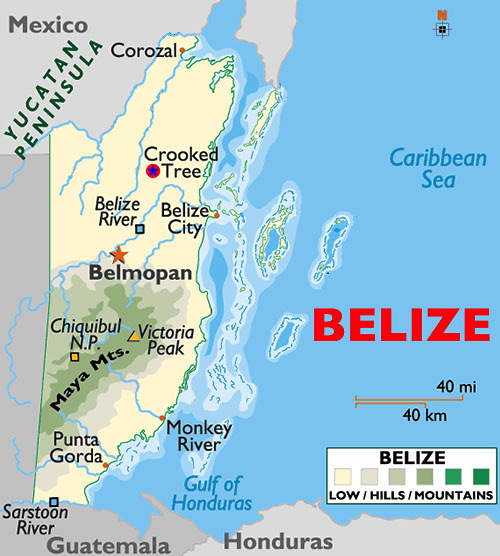
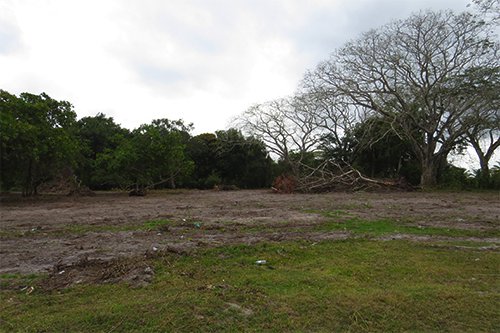
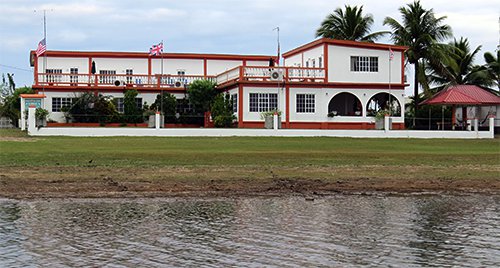
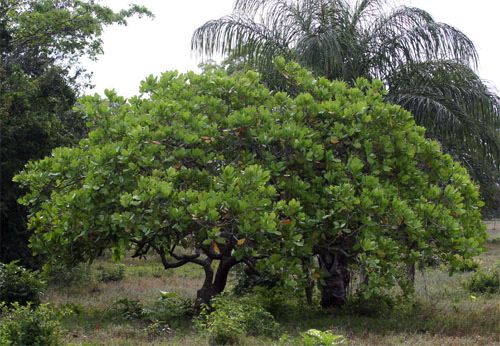
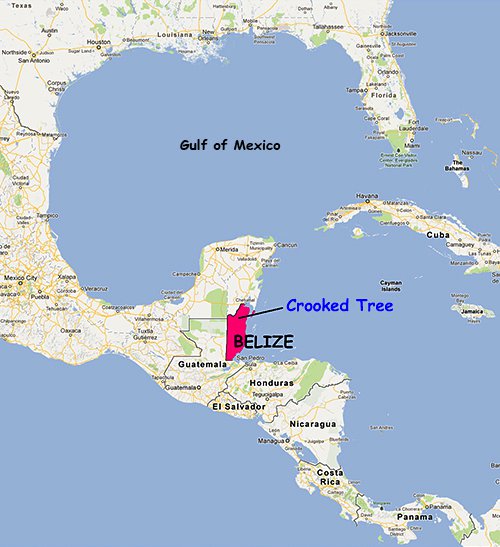
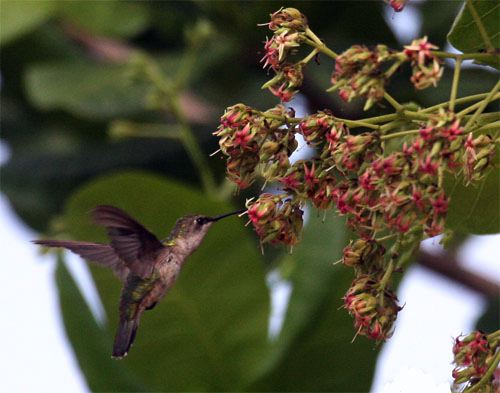
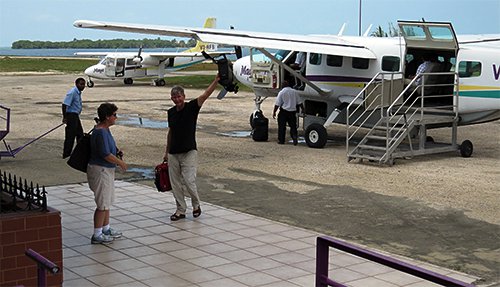
 All members but one were "newbies" to our Neotropical work, the "old-timer" being
All members but one were "newbies" to our Neotropical work, the "old-timer" being 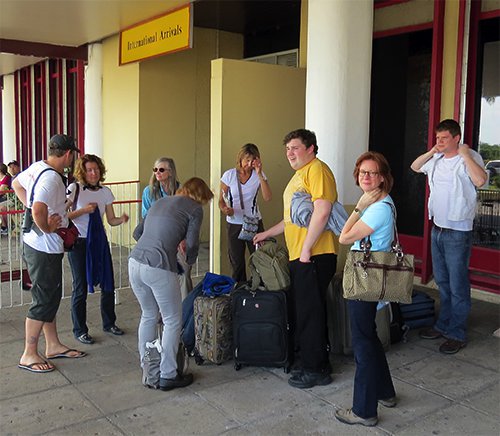
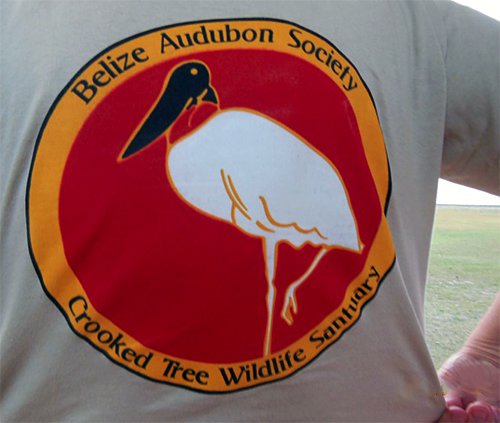

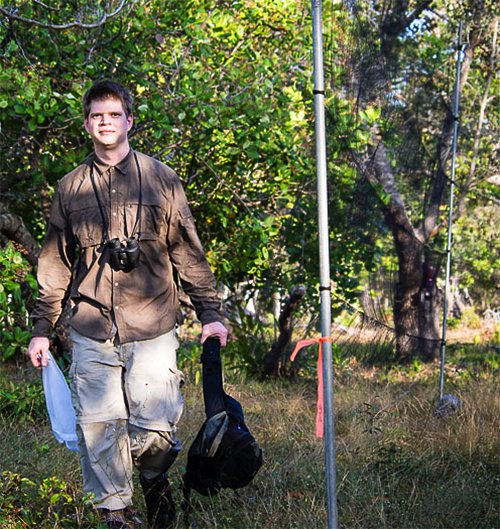
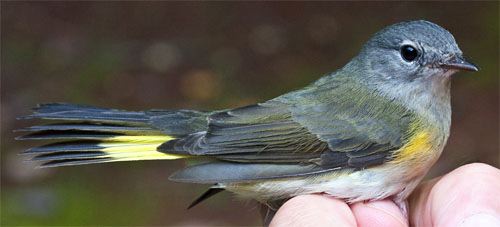
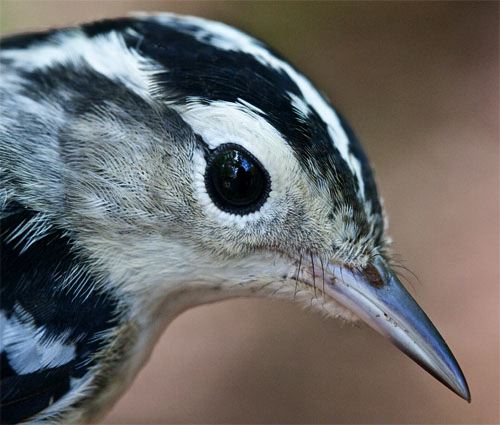
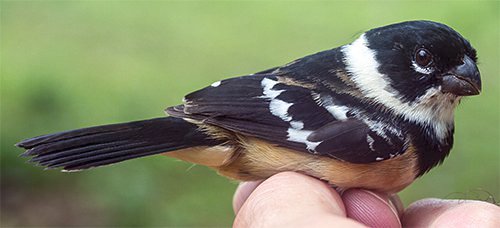
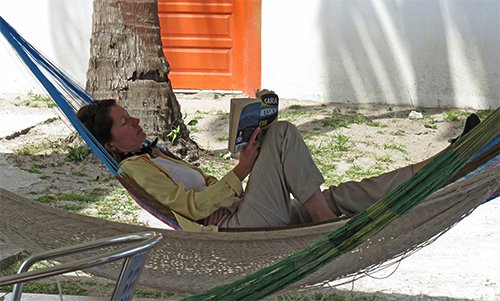
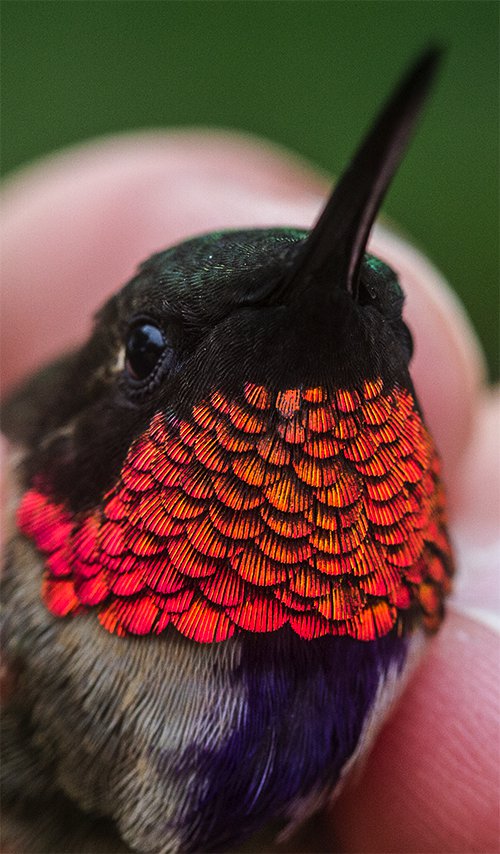


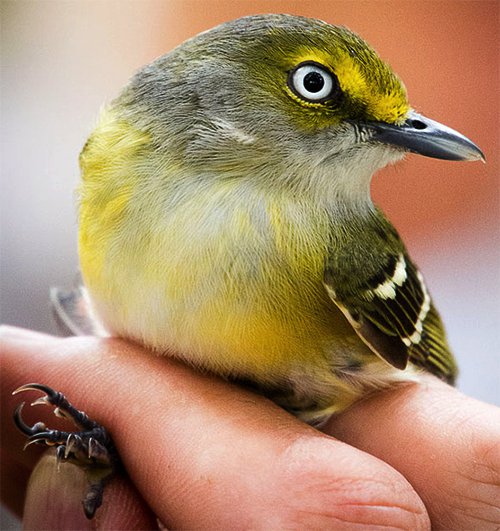
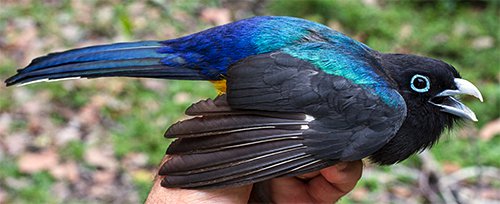
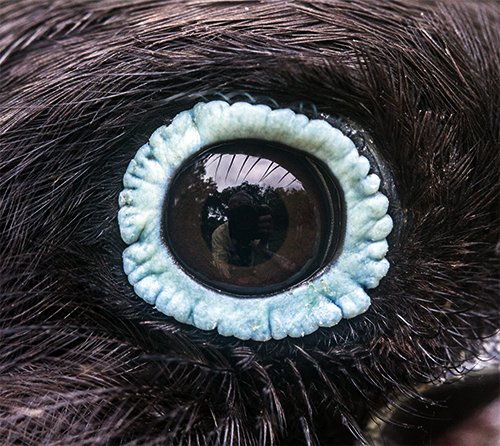
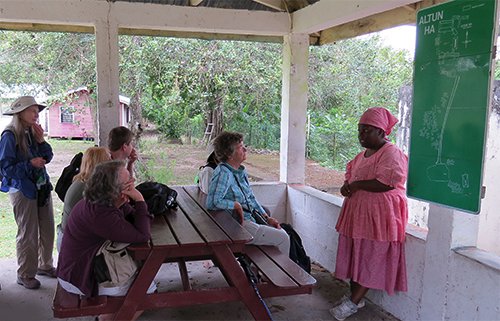
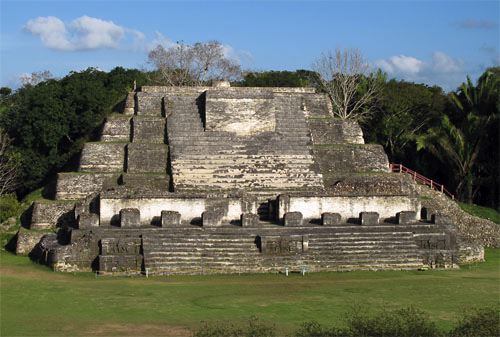

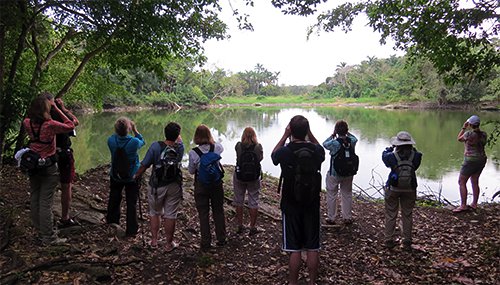
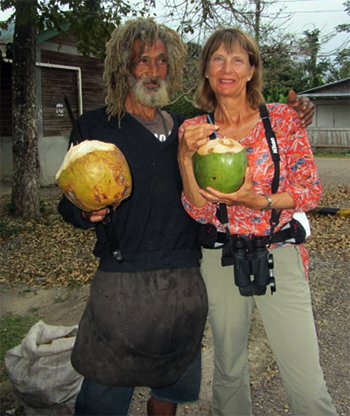 thereby forming a large hole that became Altun Ha's primary source of drinking water. As we gazed across the pond we could see and hear all sorts of wildlife, from turtles to crocodiles and kingfishers to egrets--a late afternoon chorus that serenaded us and the ghosts of Mayan workers from centuries gone by. Pulling ourselves away from this idyllic, thought-provoking scene we returned to the plaza, did a little shopping at Ann-Marie's gift shop, and--for thirsty souls such as Cindy Cigoy
thereby forming a large hole that became Altun Ha's primary source of drinking water. As we gazed across the pond we could see and hear all sorts of wildlife, from turtles to crocodiles and kingfishers to egrets--a late afternoon chorus that serenaded us and the ghosts of Mayan workers from centuries gone by. Pulling ourselves away from this idyllic, thought-provoking scene we returned to the plaza, did a little shopping at Ann-Marie's gift shop, and--for thirsty souls such as Cindy Cigoy 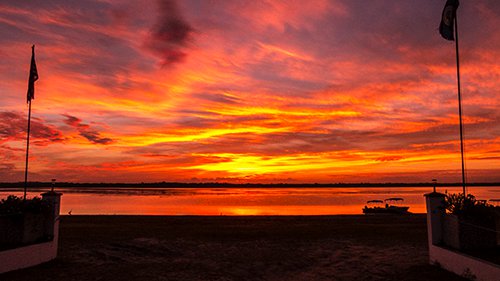

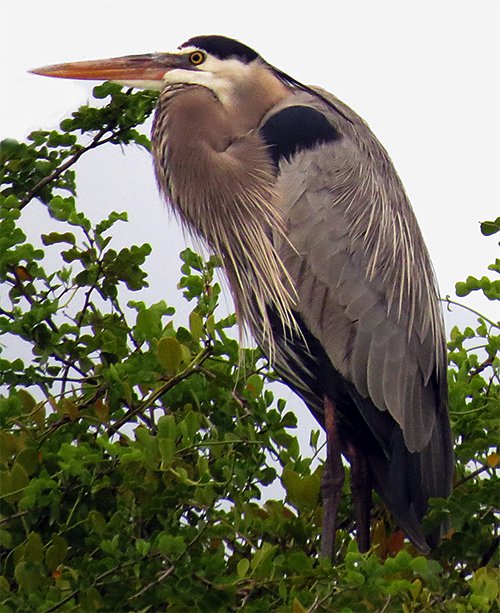

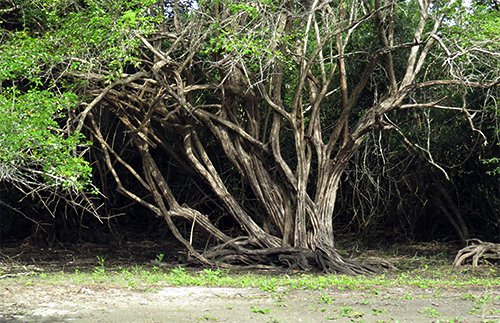
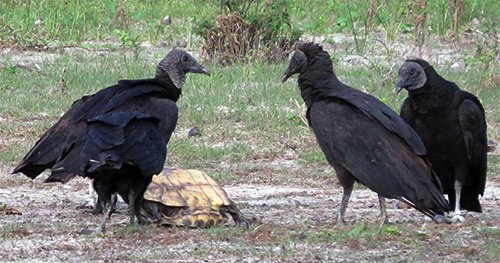



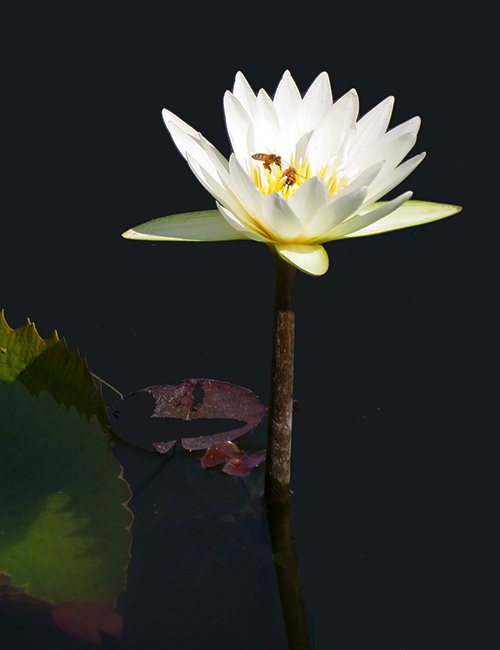
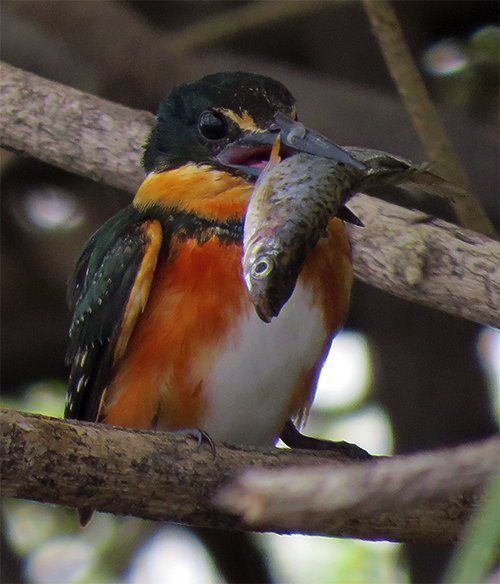

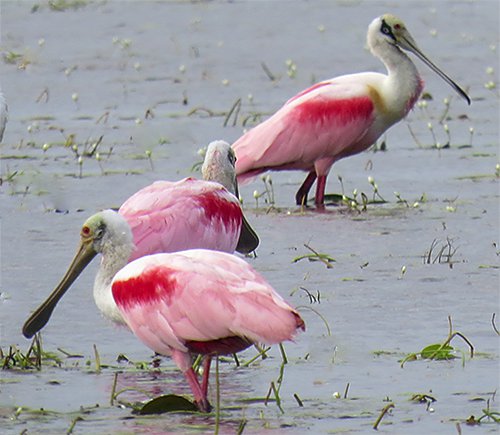
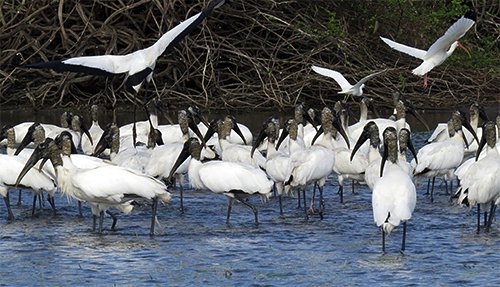

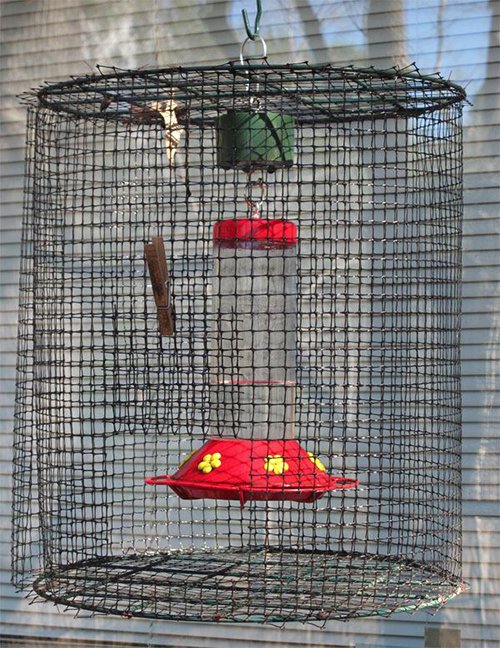 the Brata continued to "ooh" and "ahh" about what they had seen. A late breakfast followed on the lodge's open-air covered patio--a perfect place from which to survey the lagoon they had just explored.
the Brata continued to "ooh" and "ahh" about what they had seen. A late breakfast followed on the lodge's open-air covered patio--a perfect place from which to survey the lagoon they had just explored.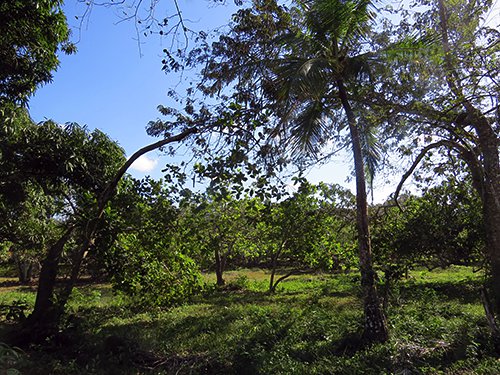
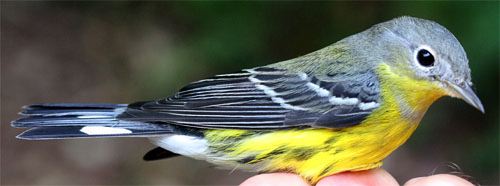
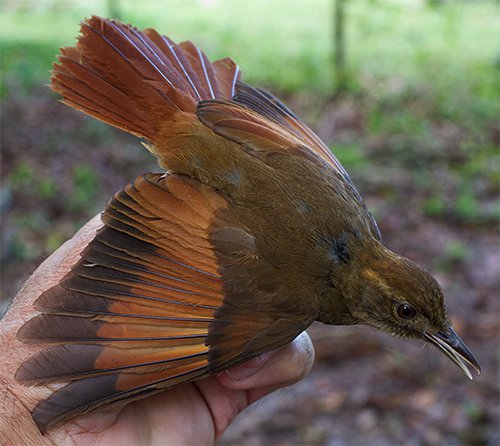
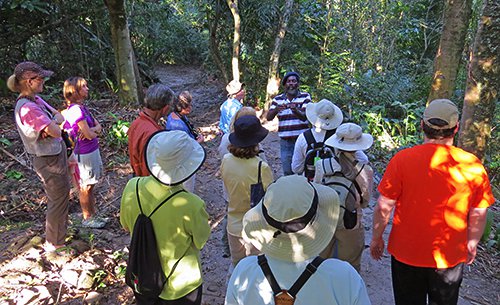
 The sanctuary "is a pioneering project in voluntary grassroots conservation. The goal is to sustain the habitat of the Black Howler Monkey
The sanctuary "is a pioneering project in voluntary grassroots conservation. The goal is to sustain the habitat of the Black Howler Monkey 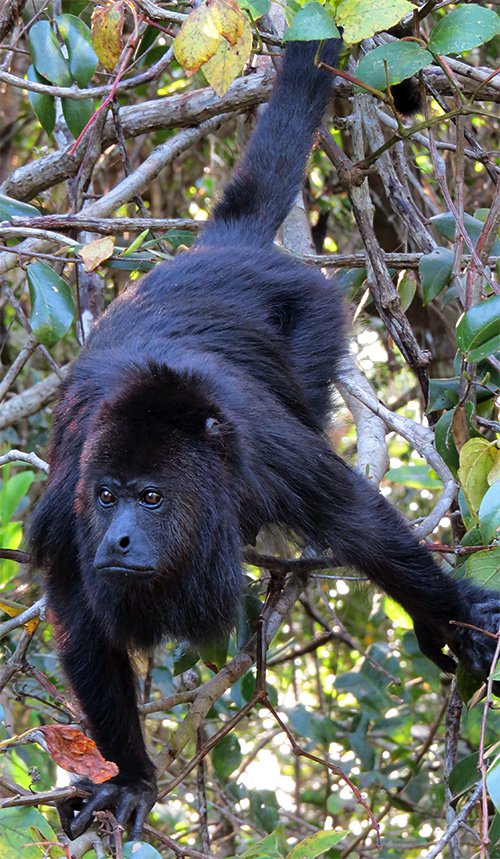
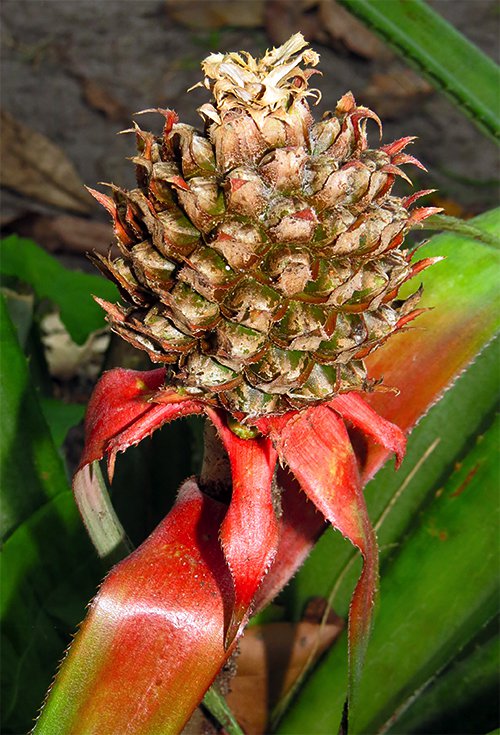
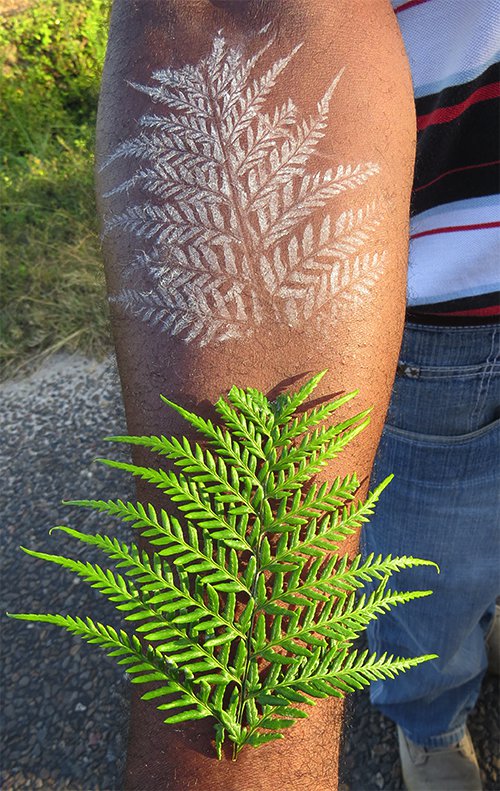
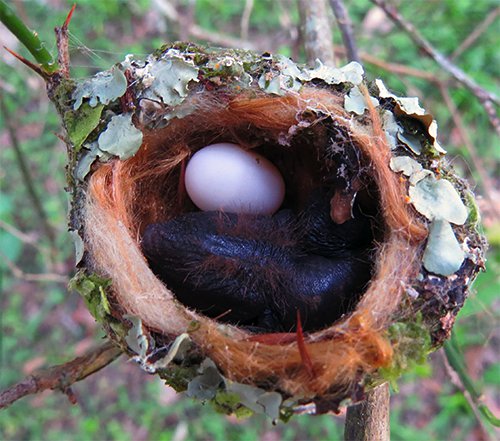
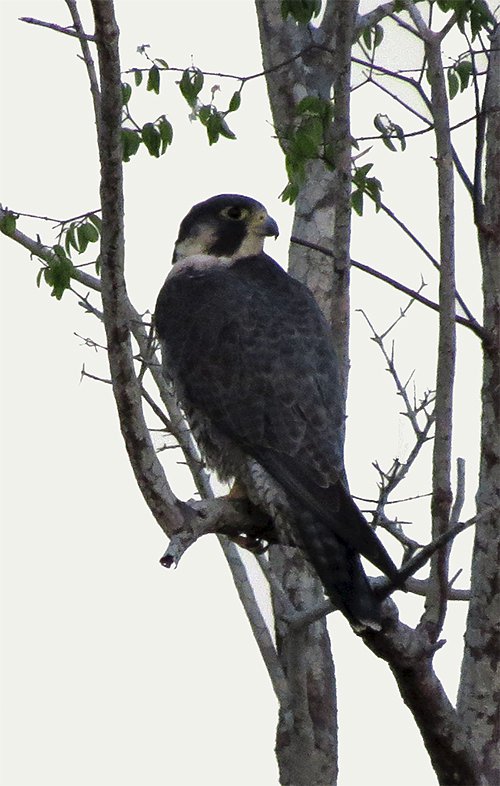
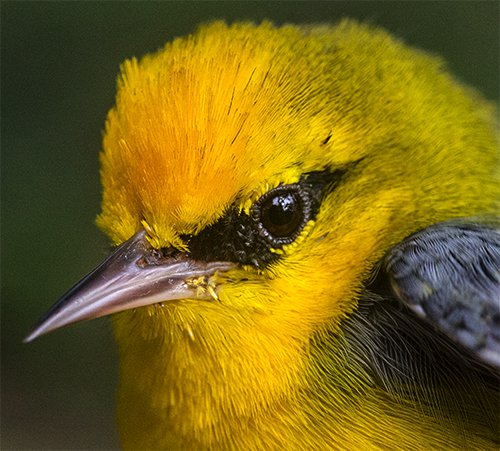
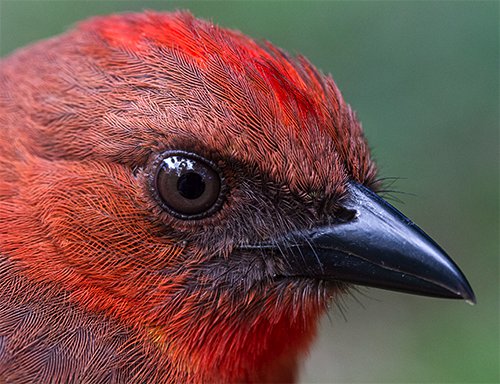
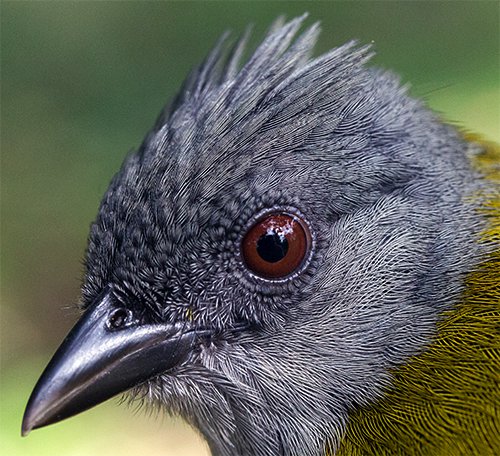
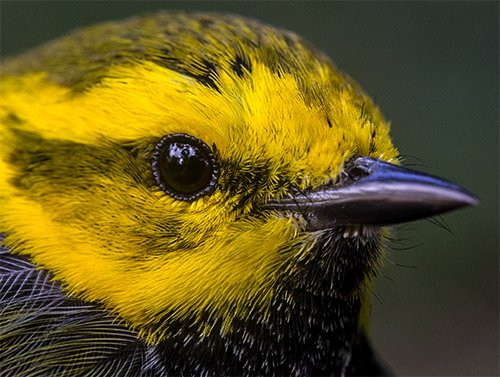
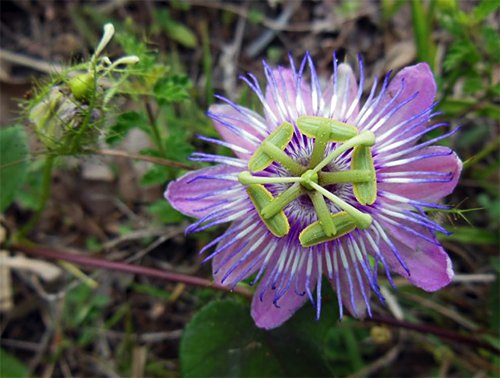
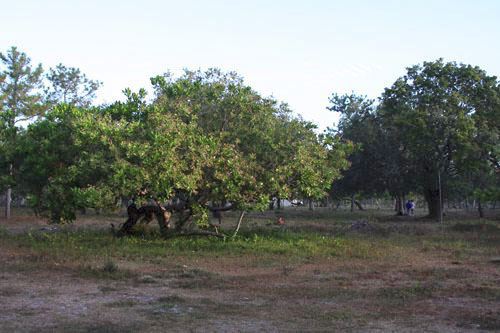
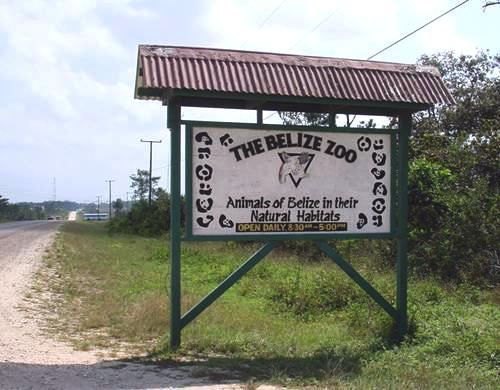
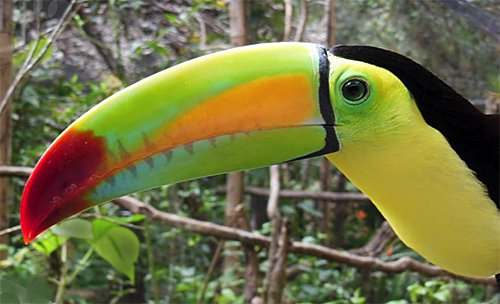
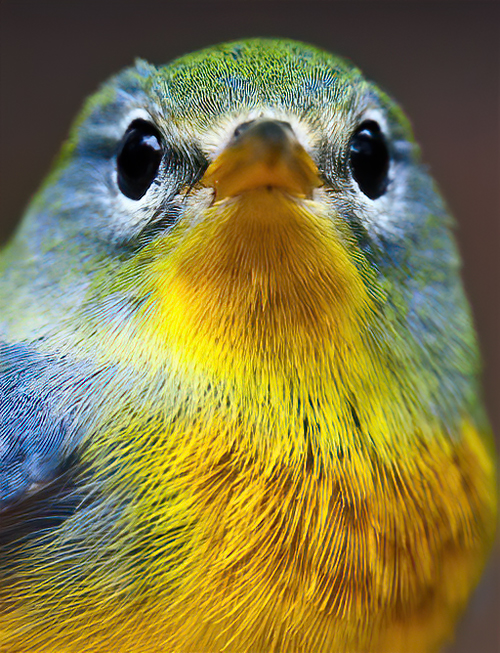
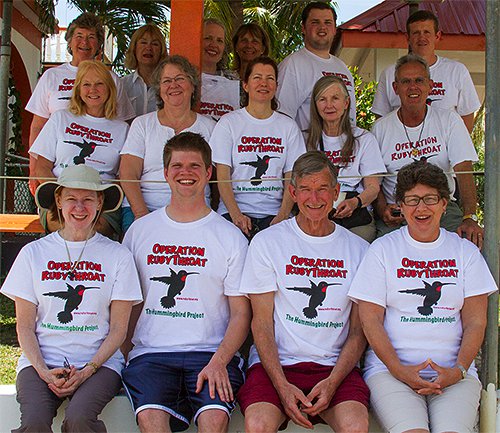
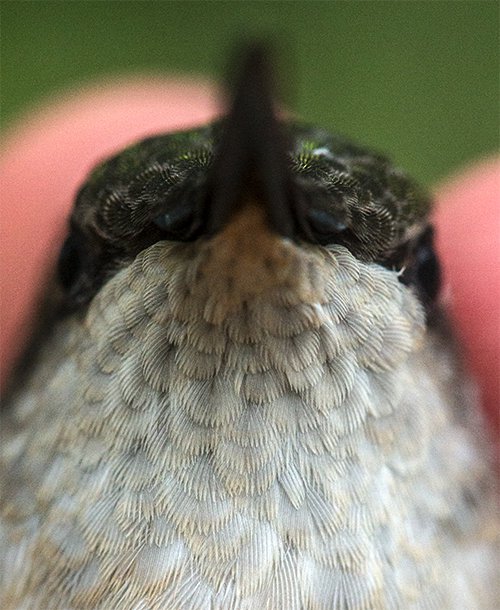
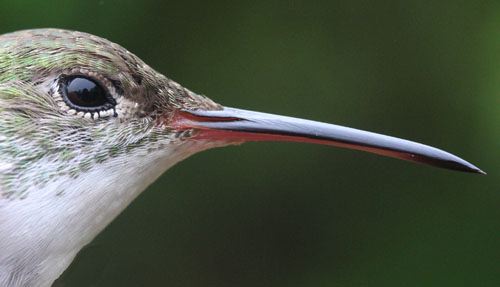





 Oct 15 to Mar 15:
Oct 15 to Mar 15: